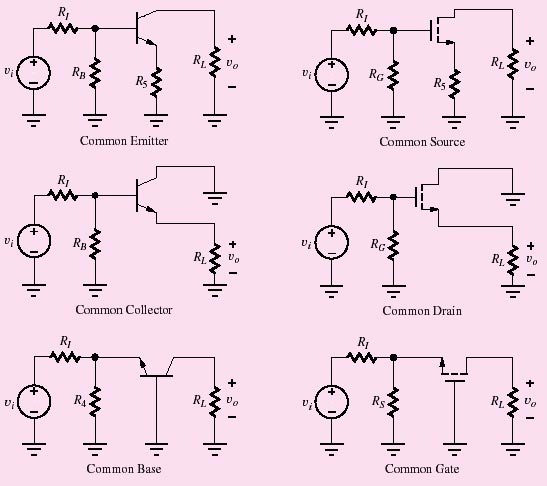
(See related pages)
Chapter 13 introduced the common-emitter and commonsource amplifiers, in which the input signal was applied to the base and gate terminals of the BJT and MOSFET, respectively, and the output signalwas taken from the collector and drain.However, bipolar and field-effect transistors are threeterminal devices, and this chapter explores the use of all the terminals for signal input and output. Three useful amplifier configurations are identified, each using a different terminal as the common or reference terminal. When implemented using bipolar transistors, these are called the commonemitter, common-collector, and common-base amplifiers; the corresponding names for the FET implementations are the common-source, common-drain, and common-gate amplifiers. Each amplifier category provides a unique set of characteristics in terms of voltage gain, input resistance, output resistance, and current gain.
The chapter looks in depth at the characteristics of each amplifier configuration, focusing on the limits solid-state devices place on individual amplifier performance. Expressions are developed for the properties of each amplifier, and their similarities and differences are discussed in detail in order to build the understanding needed for the circuit design process. The transistor-level results are used throughout this book to analyze and design more complex single-stage and multi-stage amplifiers. We also explore amplifier frequency response at low frequencies and develop design equations useful for choosing coupling and bypass capacitors. Much discussion is devoted to single-transistor amplifiers because they are the heart of analog design. These single-stage amplifiers are an important part of the basic "tool set" of analog circuit designers, and a good understanding of their similarities and differences is a prerequisite for more complex amplifier design. |
